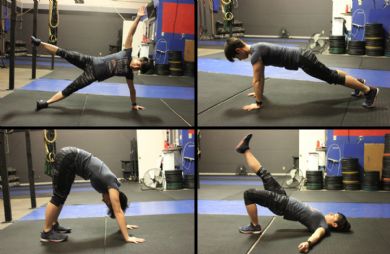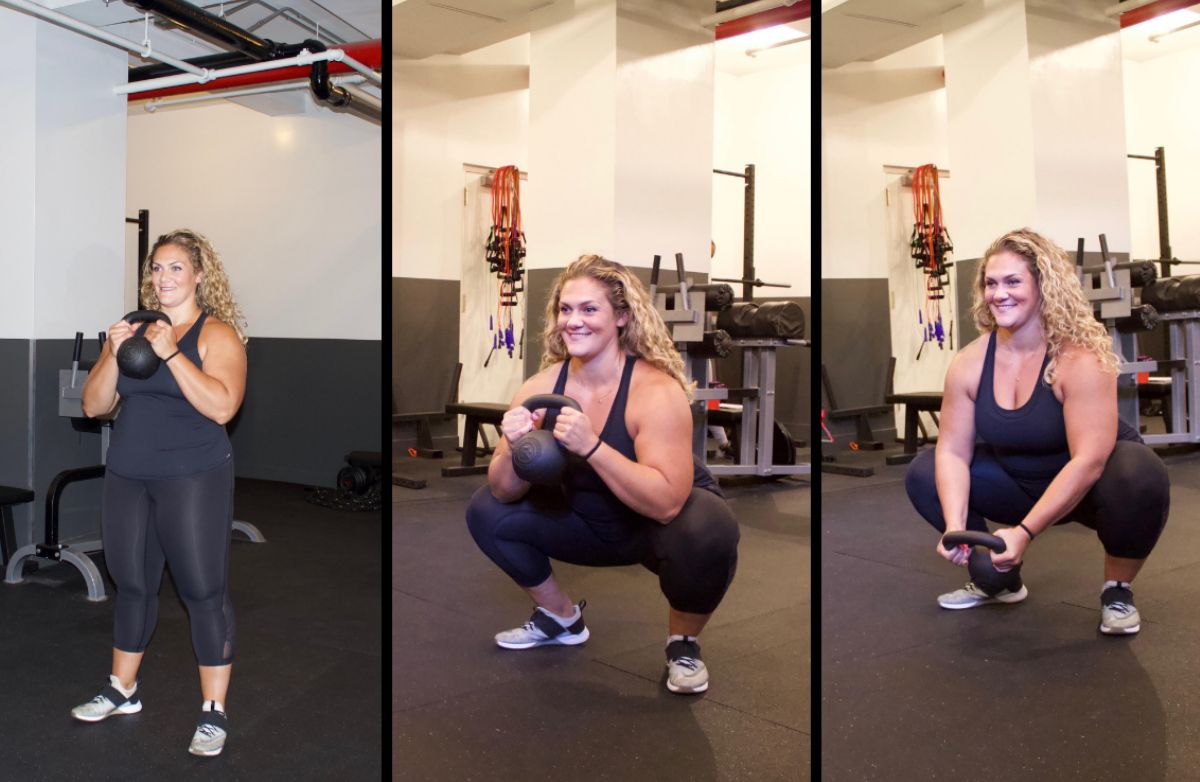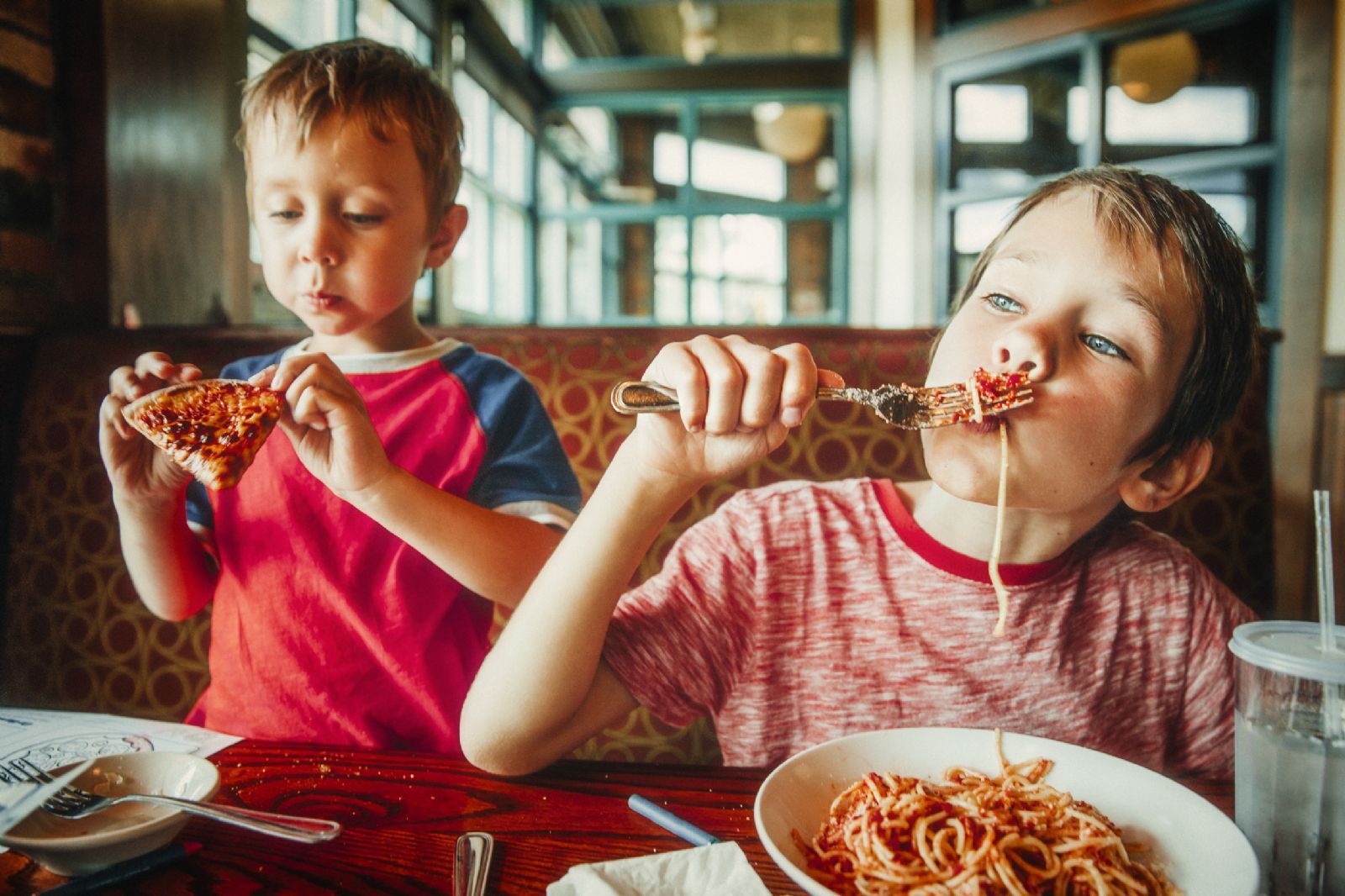-
10 Ways to Spring Clean Your Life

-
How to Avoid the 10 Most Common Running Mistakes

-
You Got Called Fat. Now What?
.png)
-
12 Hearty Soup Recipes That Will Warm You Up

-
7 Tips to Help Any Night Owl Become a Morning Person

-
9 Ways to Beat the Afternoon Slump That Have Nothing to Do with Coffee

-
10 Bodyweight Training Exercises You Can Try at Home

-
This 1 Change Helped Lori Transform Her Body

-
8 Yoga Essentials That Instructors Can't Live Without
.png)
-
17 Strength Training Exercises for Walkers

The Advice That Changed SparkPeople Members' Lives
Everyone has their own turning point. For some, that "a-ha moment" might come from seeing an unflattering photo of themselves. For others, it might be having to ask for a seatbelt extender on an airplane, or not being able to keep up during a family hike. Maybe it comes in the form of something much more serious, like worrisome test results from the doctor or a life-threatening medical emergency.
While these instances can change a life around for the good, not everyone experiences them. Sometimes, a turning point can be as simple as a a single piece of advice given in a time of need. Read More › |
Spark Spotlight: Alex (ALEXTHEHUN)
At SparkPeople, we love helping people accomplish big goals—but we believe it's equally important to celebrate the small successes along the way. Each week in the Spark Spotlight, we'll check in with a featured member about his or her proudest moments, biggest challenges and advice for others on living, thinking and feeling healthier. We hope these quick snapshots will help motivate you to keep moving steadily toward your own goals, week by week.
This Week's Spotlight: Alex (ALEXTHEHUN) Age: 65 Location: Arlington, Texas Small Success of the Week Alex, a professor at the University of Texas at Arlington, didn't let cold weather keep him from achieving his goals. Instead, he took his exercise inside, walking and climbing the stairs to get in a good cardio workout and making sure he kept his #fitnessfeats streak going. Read More › |
Should You Ever Work Out Twice In One Day?
Many days, it can be hard to find the motivation to workout at all, much less two times. For most, it's difficult to imagine structuring your day so that you get sweaty more than once. Surprisingly, though, it's a strategy that's not exclusively reserved for elite athletes. Whether you only have time for a few short workouts, you really like the program you're doing or you're training for a big event, there are a variety of reasons someone might exercise more than once a day.
We often hear that giving the body time for adequate rest is so important, and it is. But does this mean that multiple daily workouts sets you up for physical and mental burnout, or can there be a healthy place for them in your exercise routine? Experts seem to be divided. While some say there are valid reasons for exercising twice a day, others say you're better off training hard once a day and then moving on to other things. Which is right? Read More › |
100 Pounds Lost in 8 Months: How Janie Did It
When you're facing the prospect of a three-digit weight loss, it's easy to feel overwhelmed and helpless. Standing at the very beginning of a long and unpredictable road, the idea of completely overhauling your lifestyle and shedding the equivalent of a whole person can seem daunting—but it's not impossible.
Read More › |
8 Squat Variations for Strong, Sculpted Legs & Glutes
If you only have time for one strength exercise, many fitness experts agree that it should be the squat. This low-impact move works the quads, hamstrings, glutes and calves, but its benefits go far beyond muscle work. Making squats part of your daily routine also helps to strengthen the joints, boosts cardio endurance and builds a strong core. And best of all, you don't need a gym, any equipment or a big chunk of time to get your squatter's rights: Almost anyone can do them—anytime, anywhere.
Read More › |
Are Your Kids Making You Fat?
You start off the day with the best of eating and exercise intentions. You've prepped healthy meals and snacks, signed up for an afternoon spin class and plan to get in some extra steps during the little one's soccer practice. But the kids have other ideas. The picky toddler boycotts the chicken and broccoli you prepared, fighting the meal until you finally cave and serve mac and cheese (but not before a few bites make it into your mouth). Then the baby spikes a mid-day fever, landing you at the pediatrician's office right when you're supposed to be climbing on the spin bike. And later, your favorite pint-sized kicker insists that you stay to watch every last minute of soccer practice, so that your planned walk goes by the wayside. Are your kids making you fat? Of course not—well, not directly. Each of us is in full control of what and how much we put in our bodies, and whether and how often we move said bodies. No one can make those decisions for us, and displaced blame—especially directed at the chicken nugget-loving, broccoli-snubbing offspring—won't get you any closer to your goals. But hey, let's face it: Life is busy, and when you have kids depending on you for meals, rides and attention, it can be all too easy for those best of intentions to get shoved to the back burner. There are two main challenges parents often face when it comes to weight loss: eating unhealthy foods for the sake of the kids' tastes and giving up on exercise due to logistics or time constraints. Whether you have toddlers, teenagers or any age in between, it is possible to meet their needs (and maybe even some of their wants) without sacrificing what's best for you. Serve smaller portions of what they don’t like. Summer Yule, MS, RDN, estimates that approximately one third of children are picky eaters, and that the pickiness will generally resolve by age five or six. "These children benefit from continual exposure to healthful foods, but tend to leave a lot of food on their plates while their palate expands," she explains. "This can mean that either a lot of food is being wasted—or the parent ends up eating the extra food." If you're one of the many parents tasked with feeding picky eaters, Yule recommends serving them only a small bite of less preferred foods, rather than a whole serving. In this way the child can more easily experience success for “finishing their vegetables” (or another less preferred food), while getting exposure to a wider dietary variety and slowly becoming desensitized to the strong taste of these foods. And this also means there will be less uneaten food for you to finish later, if you're prone to impulsive plate-picking. Track every BLT—or avoid them altogether. No matter how healthy your meals are, it's easy to fall into the trap of finishing the kids' leftovers, which can add up to excess calories. Liza Baker with Simply: Health Coaching stresses the importance of tracking everything you consume, even if it wasn't from your proper plate. "Be sure to include every BLT—every bite, lick and taste—including what you're finishing from the kids' plates," she says. Even better, dietitian Chelsey Amer advises her clients to refrain from picking at all, as those extra BLTs may lead away from regularly scheduled meals and snacks in favor of all-day grazing, which isn’t good for the blood sugar or metabolism. "Also, you often don’t remember these BLTs, so you’re less satisfied from these eating experiences," Amer warns. "This can lead to eating beyond your needs." Save kids' leftovers for later. When they have three bites and are suddenly "full," you don't want to just throw away all that food you spent time and money preparing, nor do you want to give into eating a substantial amount of extra calories. There is a third option: If there is salvageable food left, pack it up for the kids to finish later (when they no doubt become again hungry moments later). "If you immediately refrigerate room-temperature leftovers after dinner rather than letting them sit around for a long time, they will likely be safe," Baker notes. More care should be taken with proteins, especially animal proteins, she says, but in general, most starches and vegetables should be fine to save. Prepare the same foods for everyone. It's easy to fall into the trap of cooking two meals: one for the adults and one for the kids. This might keep the peace for today, but it establishes an unhealthy precedent and also makes you more vulnerable to sampling the unhealthy fare on their plates. "Somewhere along the line, we decided that kids don't eat adult food," Baker points out. "The notion is affirmed by most kids' menus out there—a long list of pizza, nuggets, mac and cheese, burgers, fries. This becomes a vicious cycle, as kids start to think that they should be eating these foods daily, and parents succumb to their demands because it's just easier not to fight one more battle every day." Baker suggests talking to your kids and explaining that these types of foods are not healthy. Yes, they taste good, and it's fine to have them on occasion as treats—but meals at home can be equally delicious and also much better for them. Give the snack cupboard an overhaul. When children are in the house, it's easy to wind up with a pantry and fridge that’s stocked with snacks you might not choose for yourself (Cheez-Its, Twinkies, Kool-Aid…the list goes on). In addition to being unhealthy for the kids, another danger is that you could end up snacking on them yourself. "The reality is, if a snack is not healthy enough for you, it is not healthy enough for your children," notes weight loss therapist Dr. Candice Seti. "Instead of treating them to these unhealthy snacks, give them options you can feel good about and that will provide them with lots of nutrients." Some healthier snacking choices include yogurt, cheese, veggies and hummus, dried fruit, nuts, natural peanut butter and whole-grain crackers. Involve the kids in exercise. Don't let lack of childcare stand in the way of your workouts. Yule points out that there are many ways to get physical activity with kids in tow, so you'll be modeling healthy behavior while burning calories. Some ideas include running around with water guns or water balloons, going on a bike ride together, playing tag, playing hide-and-seek, dancing to silly music, doing yoga, roller skating at a local park or simply going out for a walk. If the kids are old enough, you could even invite them to do an exercise video with you. "Put your small child in a stroller and go for your walk or run, let your older children scooter or bike next to you or go for a run with your teen," Baker suggests. "It's vital that they see you moving your body and move their own!" Make cooking a fun family activity. When the kiddos are involved in the food prep process, they'll become more engaged with the meal and will be much more likely to eat it, notes Baker. She suggests setting up a bar with bowls, tacos, burritos, nachos, baked potatoes, chili, salads or anything that allows kids to assemble their own foods using a variety of healthy toppings. "If they 'make' it themselves, they're much more likely to eat it," Baker says. She also recommends preparing simple, mix-and-match meals, with the idea that if you make a protein, a starch and a vegetable, there should always be two or three components that everyone will eat. "If they don't like the meat, let them eat rice and veggies; if they don't like the veggies, let them eat meat and potatoes, and so on," she suggests. "Try to vary the menu so that over the course of a week (not necessarily a day), everyone has some protein, carbs and veggies that they like." Simplify and seek help. If your children's activities are monopolizing your free time and making it impossible to fit in exercise, meditation or any sort of "you time" that promotes your health and relaxation, Baker says it's time to reevaluate. Look at ways to simplify your schedule—perhaps you can limit each child to one after-school sport or activity. You can also look for opportunities to carpool with other parents or coordinate childcare swaps to lighten your load. |
















.jpg)
.jpg)








